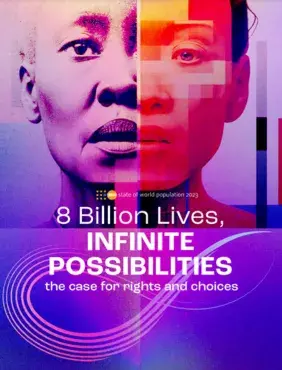Ours is a world of hope and possibility, a world where the human family is larger than ever before. It is a world in which we are collectively living longer and, on balance, enjoying better health, more rights and broader choices than at any other point in human history. Ours is also a world of anxieties: the tensions of everyday life are rapidly accumulating amid economic uncertainty, the existential question of climate change, the still-rising toll of the COVID-19 pandemic and the ongoing ravages of conflict.
In November 2022, the United Nations announced that the human population had surpassed 8 billion people, and also that two thirds of people were living in places where fertility rates had fallen below the so-called “replacement level” of 2.1 births per woman. These trends offer a nuanced look at demographic transition — the shift from higher to lower mortality and fertility — as it unfolds in different countries and contexts. But the subtleties of this story were very often lost. “Too many” people will overwhelm the planet, many pundits proclaimed, even as others warned that “too few” people would lead to civilizational collapse. Every population trend seems to invoke its own vision of catastrophe. Too many young people? Destabilizing. Too many old people? A burden. Too many migrants? A threat
To be sure, there are many valid and pressing concerns related to population, such as the complex links between population size, affluence and fossil fuel consumption, and the challenges of budgeting for infrastructure, health services and pension programmes. But when we flatten out the nuance, we obscure the very problems we need to address, burying them beneath layers of hyperbole and blame. Fertility rates that deviate from 2.1 are widely treated as red flags, predictive of either impending overpopulation or catastrophic depopulation. The solutions, it is often said or implied, should therefore be fertility related. Fears and fixes begin to take the form of a woman’s body.


